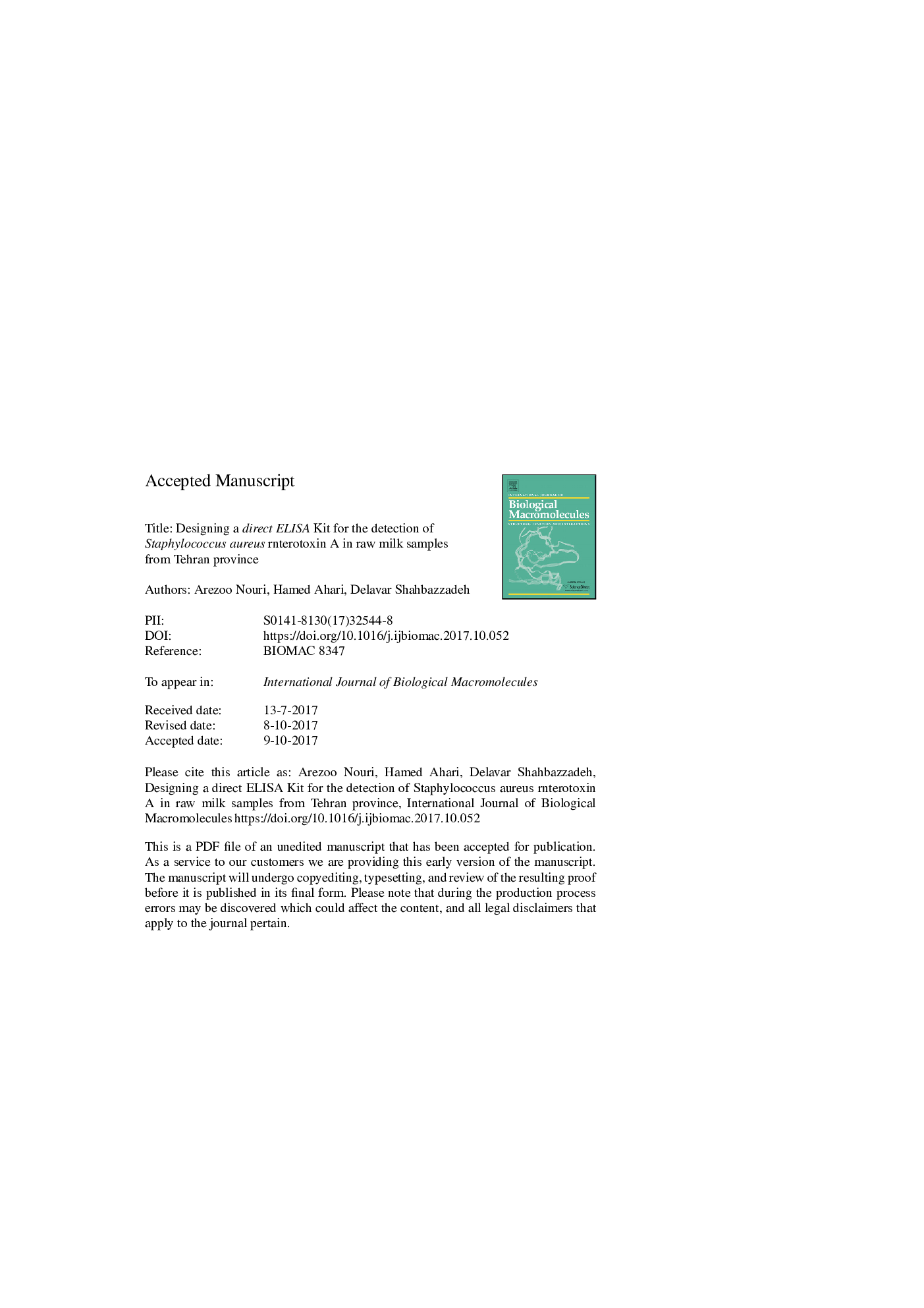| Article ID | Journal | Published Year | Pages | File Type |
|---|---|---|---|---|
| 8328781 | International Journal of Biological Macromolecules | 2018 | 17 Pages |
Abstract
Under favorable growth conditions, Staphylococcus aureus infects and causes illnesses in humans and animals. Staphylococcal enterotoxins are considered the most important factor for food poisoning, with these toxins usually found in milk and its byproducts. This study investigated the presence of a classical enterotoxin of S. aureus (enterotoxin A) in raw cow milk samples obtained from Region 3 of Tehran. Sixty cow milk samples were collected from traditional dairy sales centers in the study site. Electrophoresis, high-performance liquid chromatography, sandwich ELISA, and direct ELISA were evaluated as methods for detecting toxins in the milk. A direct ELISA kit was designed, with the best factors, the most suitable densities, and the most optimal temperatures and temporal incubation conditions incorporated into the design. Among the evaluated methods, direct ELISA exhibited the highest accuracy in toxin detection. The designed kit achieved a correctness coefficient of 0.98 and detected enterotoxin A in 23% of the samples. It also exhibited a relative sensitivity and other features that are comparable to those of other bacterial detection techniques. Finally, the kit achieved good matching and repetition results, and no cross-reactions occurred between enterotoxins during the procedure.
Related Topics
Life Sciences
Biochemistry, Genetics and Molecular Biology
Biochemistry
Authors
Arezoo Nouri, Hamed Ahari, Delavar Shahbazzadeh,
